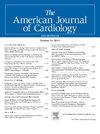Real-World Reductions in Lead-Free Radiation Exposure with the Rampart System during Endovascular Procedures
IF 2.3
3区 医学
Q2 CARDIAC & CARDIOVASCULAR SYSTEMS
引用次数: 0
Abstract
Endovascular operators experience elevated rates of occupational orthopedic injuries and persistent radiation exposure with current lead shielding. Novel shielding systems eliminate the need to wear lead aprons while also mitigating occupational radiation exposure, but real-world evidence of their efficacy remains needed. This study evaluated consecutive endovascular procedures requiring fluoroscopy at U.S. and international institutions following installation of a commercially available portable shielding system consisting of interlocking radiation-attenuating acrylic and soft shielding components. Live dosimeters were placed at the left shoulder of the main and assistant operators for quantification of radiation exposure. In total, 1,712 endovascular procedures performed by 671 operators at 153 sites (19% non-U.S.). In 1,712 (99.4%), radiation exposure was recorded. A majority of procedures (83.6%) were coronary interventions including diagnostic angiography (43.8%), nonchronic total occlusion PCI (27.6%), and chronic total occlusion PCI (6.7%). Median fluoroscopy time was 7.7 mins (IQR 3.9 to 15.3 min), and median radiation exposure to the main operator and first assistant was 2 μSv and 1 μSv. This was comparable to historical measurements of under-lead radiation exposure. In conclusion, the Rampart system effectively reduced radiation exposure in real-world practice, enabling a safe lead-free procedure lab.
血管内手术操作人员的骨科职业损伤率较高,而且在目前的铅屏蔽系统下仍会受到持续的辐射照射。新型屏蔽系统既无需穿戴铅围裙,又可减轻职业辐射暴露,但仍需实际证据证明其功效。这项研究评估了美国和国际机构在安装了市售的便携式屏蔽系统(由互锁的辐射衰减丙烯酸和软屏蔽组件组成)后进行的需要透视的连续血管内手术。在主要操作员和助理操作员的左肩上放置了活体剂量计,以量化辐射暴露量。共有 671 名操作员在 153 个地点(19% 非美国)进行了 1712 例血管内手术。其中有 1712 例(99.4%)记录了辐射暴露。大多数手术(83.6%)是冠状动脉介入治疗,包括诊断性血管造影(43.8%)、非慢性全闭塞PCI(27.6%)和慢性全闭塞PCI(6.7%)。透视时间中位数为 7.7 分钟(IQR 为 3.9-15.3 分钟),主要操作者和第一助手的辐射暴露中位数分别为 2 μSv 和 1 μSv。这与历史测量的铅下辐照度相当。总之,Rampart 系统有效地减少了实际操作中的辐射暴露,实现了安全的无铅手术室。
本文章由计算机程序翻译,如有差异,请以英文原文为准。
求助全文
约1分钟内获得全文
求助全文
来源期刊

American Journal of Cardiology
医学-心血管系统
CiteScore
4.00
自引率
3.60%
发文量
698
审稿时长
33 days
期刊介绍:
Published 24 times a year, The American Journal of Cardiology® is an independent journal designed for cardiovascular disease specialists and internists with a subspecialty in cardiology throughout the world. AJC is an independent, scientific, peer-reviewed journal of original articles that focus on the practical, clinical approach to the diagnosis and treatment of cardiovascular disease. AJC has one of the fastest acceptance to publication times in Cardiology. Features report on systemic hypertension, methodology, drugs, pacing, arrhythmia, preventive cardiology, congestive heart failure, valvular heart disease, congenital heart disease, and cardiomyopathy. Also included are editorials, readers'' comments, and symposia.
 求助内容:
求助内容: 应助结果提醒方式:
应助结果提醒方式:


